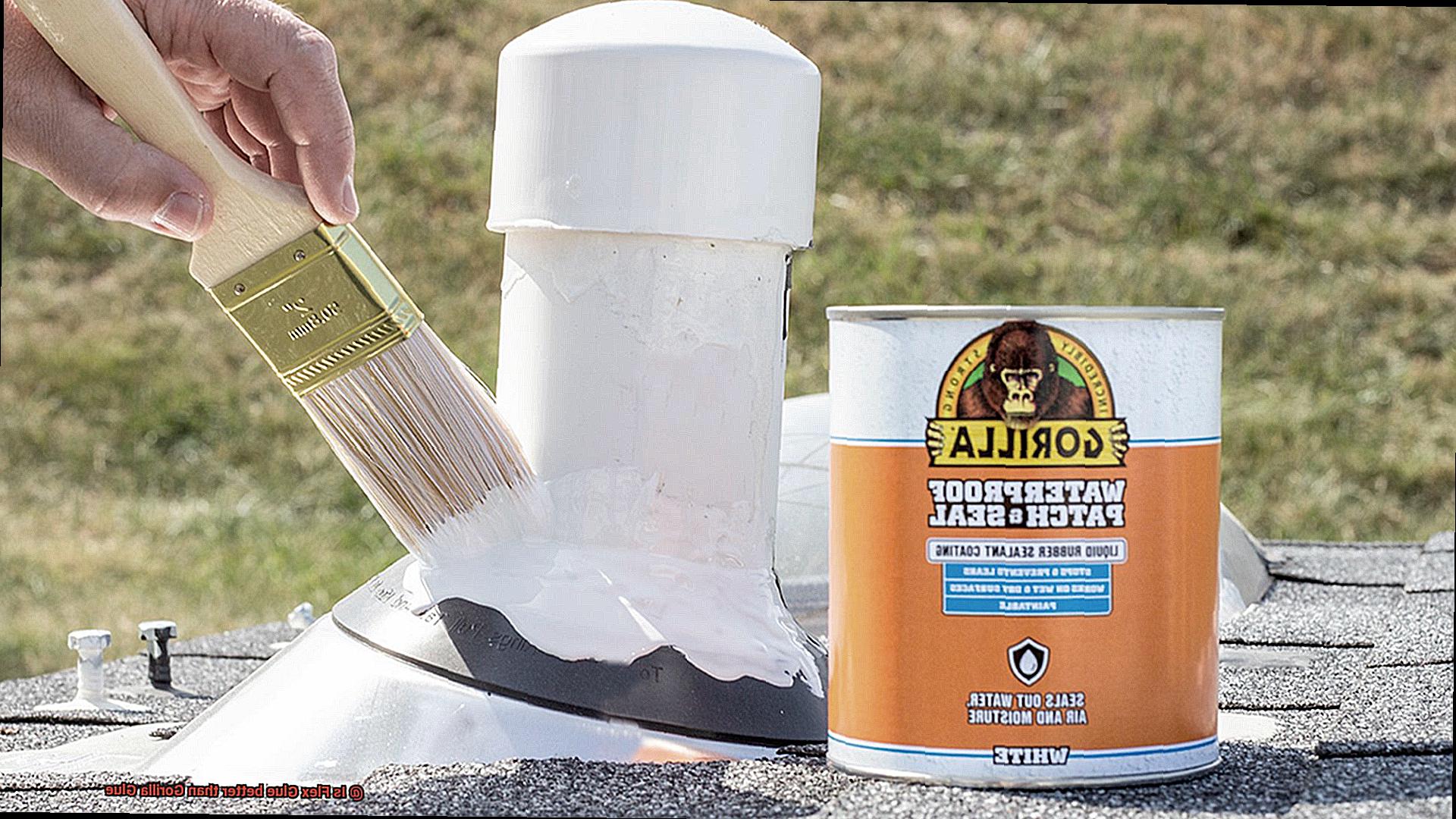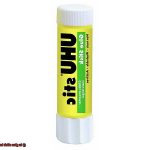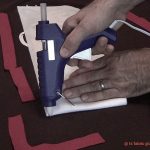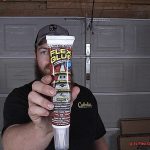When it comes to gluing stuff together, two big names pop up: Flex Glue and Gorilla Glue.
Whether you’re a DIY pro or a professional builder, having the right glue that sticks like crazy is crucial. Both Flex Glue and Gorilla Glue have their own groupies, but which one is truly top dog?
So, grab your gear and let’s plunge into the sticky world of glue.
Overview of Flex Glue
Contents
Flex Glue, manufactured by the reputable company Flex Seal, has become the go-to choice for adhesive solutions among DIY enthusiasts and professionals. With its range of features and advantages, this versatile adhesive stands out from the competition.
One of the key features of Flex Glue is its ability to bond various surfaces, including wood, metal, ceramic, foam, glass, and more. This makes it the ideal adhesive for a wide range of projects and repairs. Whether you’re fixing a broken chair leg or sealing a leaky pipe, Flex Glue claims to provide a reliable and durable solution.
Flexibility is another standout feature of Flex Glue. Unlike some adhesives that become brittle or crack over time, Flex Glue maintains its flexibility even after drying. This makes it perfect for applications where movement or expansion and contraction are expected, such as outdoor projects or areas with temperature fluctuations.
Waterproof properties are also a highlight of Flex Glue. It forms a strong bond that is resistant to moisture, making it suitable for both indoor and outdoor use. Need to repair your outdoor furniture or fix leaks in your plumbing system? Flex Glue has got you covered.
In terms of application, Flex Glue is incredibly user-friendly. It comes in a convenient tube with an easy-to-use applicator tip, allowing you to apply it directly to the surface without the need for additional tools or equipment. The glue is thick enough to stay in place but allows for precise application without dripping or running.
Flex Glue has gained popularity through various marketing campaigns that showcase its strength and versatility. Commercials featuring heavy objects being held together or bonded to walls may seem exaggerated, but they demonstrate the adhesive’s strong bonding capabilities and create an impression of reliability and durability.
But how does Flex Glue compare to another popular adhesive, Gorilla Glue? Both offer similar features and strengths, but there are some key differences to consider. Flex Glue has instant grab, while Gorilla Glue requires clamping or heavy objects to hold the bonded surfaces together until it fully cures. Flex Glue is known for its mess-free application, while Gorilla Glue can cause foaming or overflow if applied excessively.
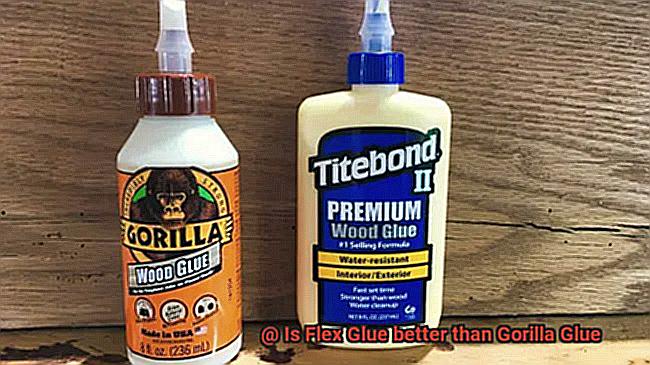
Ultimately, the choice between Flex Glue and Gorilla Glue depends on your specific needs and preferences. Consider factors such as material compatibility, cure time, ease of application, and specific bonding requirements. Both products have their strengths and are trusted by consumers, so you can’t go wrong with either choice.
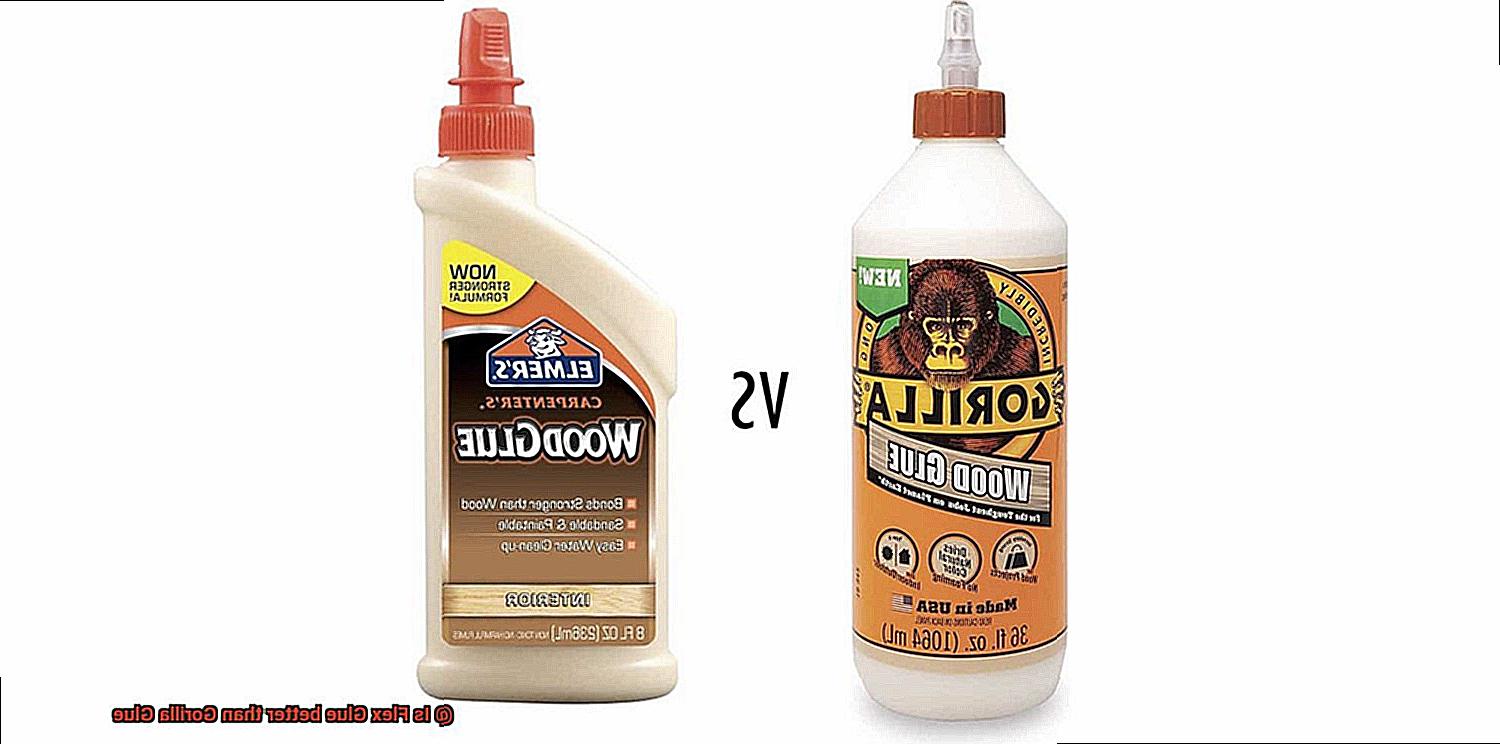
Overview of Gorilla Glue
Gorilla Glue is a revolutionary adhesive that surpasses all others in strength and reliability. Whether you’re a DIY enthusiast or a professional in need of a trustworthy adhesive, Gorilla Glue is the ultimate solution to all your sticking needs.
Strength is where Gorilla Glue truly shines. This polyurethane-based adhesive forms an incredibly robust bond that can withstand extreme temperatures, moisture, and even vibration. No matter the nature of your project, Gorilla Glue provides a durable hold that stands the test of time.
But that’s not all – Gorilla Glue has another trick up its sleeve. It expands. When applied, the glue expands to fill in any gaps or irregularities in the surfaces being bonded. This creates a tight and secure bond that ensures a long-lasting result. Just be cautious not to go overboard with the glue, as excessive use can lead to foaming and may require some cleanup.
One of the standout features of Gorilla Glue is its waterproof properties. Once fully cured, this adhesive becomes resistant to water, making it perfect for projects that require exposure to moisture or wet conditions. Say goodbye to worrying about your glued items falling apart when they get wet – Gorilla Glue has got you covered.
Not only is Gorilla Glue strong and waterproof, but it’s also incredibly versatile and easy to use. It comes in various forms such as liquid glue, gel glue, and even glue sticks, providing options for different project needs. Simply dampen one surface before applying the glue to activate its bonding process, and you’re good to go.
As for drying time, Gorilla Glue typically requires about 24 hours for a full cure. However, keep in mind that factors like temperature and humidity can affect drying time, so always consult the instructions on the packaging for optimal results.
Comparison of Flex Glue and Gorilla Glue

When it comes to choosing the perfect adhesive for your DIY projects or household repairs, two heavyweights dominate the ring: Flex Glue and Gorilla Glue. These adhesive titans have their own unique characteristics and strengths, making them go-to choices for many.
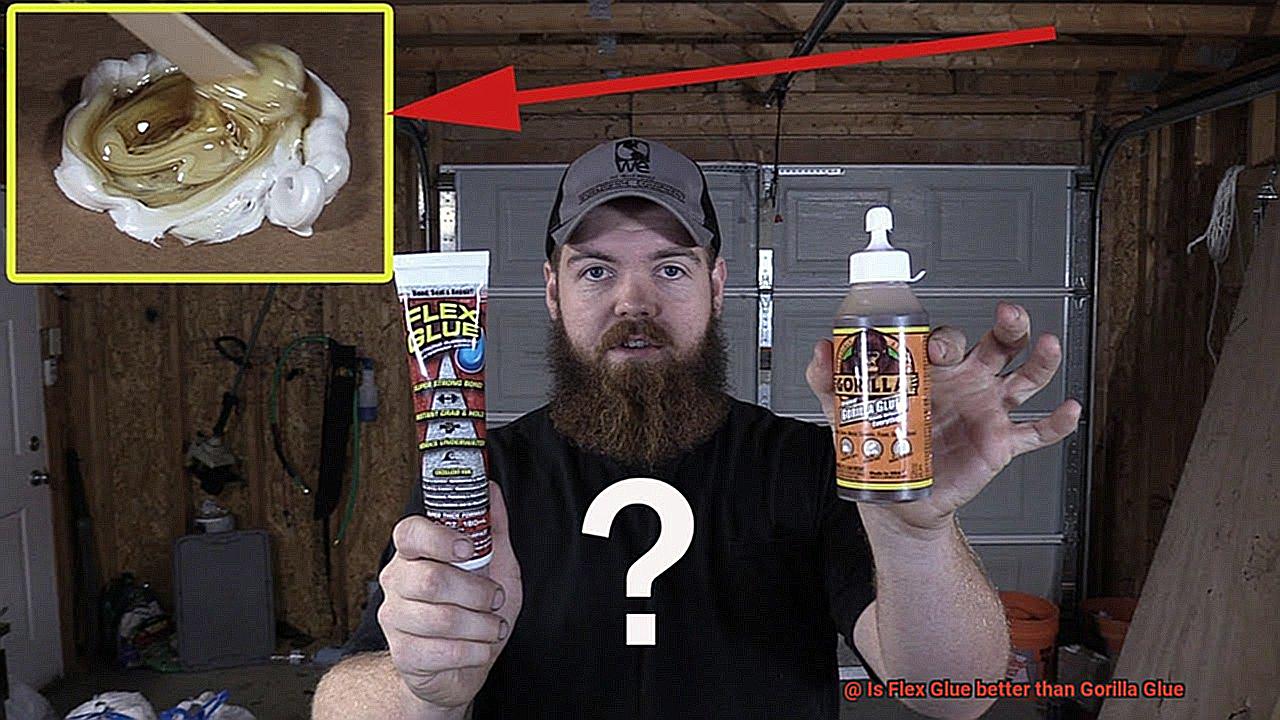
In this article, we will delve into the battle of Flex Glue vs. Gorilla Glue, exploring their application methods, strength, drying time, and other crucial factors that will help you make an informed decision.
Application Methods:
Flex Glue enters the arena with a convenient tube and a precision nozzle, allowing you to apply the adhesive with surgical accuracy right where you need it. On the other hand, Gorilla Glue comes armed with a brush or spreader, offering more control over the amount and placement of the adhesive.
Strength:
Both Flex Glue and Gorilla Glue are renowned for their exceptional bonding capabilities. However, in terms of sheer strength, Gorilla Glue takes center stage. It boasts an unbreakable bond that can withstand heavy loads and relentless stress. This adhesive powerhouse is often recommended for structural repairs or bonding hefty objects together.
Flexibility:
Flex Glue flexes its muscles in the flexibility department. Its rubberized formula allows it to create a bond that can withstand movement and vibrations without surrendering its grip. This makes it an ideal choice for applications that demand flexibility, such as repairing or bonding materials subjected to frequent bending or stretching.
Drying Time:
In the race against time, Flex Glue emerges as the victor. With its quick-drying capabilities, it typically sets within 24 hours, allowing you to swiftly move on with your project. On the contrary, Gorilla Glue requires more patience due to its longer drying time—sometimes spanning 24-72 hours depending on the material and environmental conditions.
Waterproof Properties:
Both Flex Glue and Gorilla Glue possess the ability to repel water, making them suitable for both indoor and outdoor projects. However, Flex Glue takes it a step further by boldly claiming to withstand extreme conditions such as torrential rain and even underwater applications. This exceptional waterproofing ability solidifies its standing as a top choice for projects requiring optimal water resistance.
Price:
In terms of price, both Flex Glue and Gorilla Glue enter the ring at similar price points. However, it’s worth noting that prices may fluctuate depending on the size and specific product variant.
Strength and Durability
When it comes to glue, we all want something that can stand up to the toughest challenges and endure the test of time. That’s why it’s crucial to compare two heavyweight contenders in the adhesive world: Flex Glue and Gorilla Glue. These adhesive titans offer unique strengths and characteristics that make them go-to choices for DIY projects and repairs.
Flex Glue is known for its versatility, capable of bonding a wide range of materials including wood, metal, rubber, fabric, and even glass. It forms a flexible bond that can withstand vibrations, impacts, and fluctuations in temperature. This makes it the ideal choice for applications where strength and durability are paramount, such as repairing outdoor furniture or securing loose tiles. Flex Glue’s rubberized formula allows it to tightly grip surfaces without giving in to movement or vibrations.
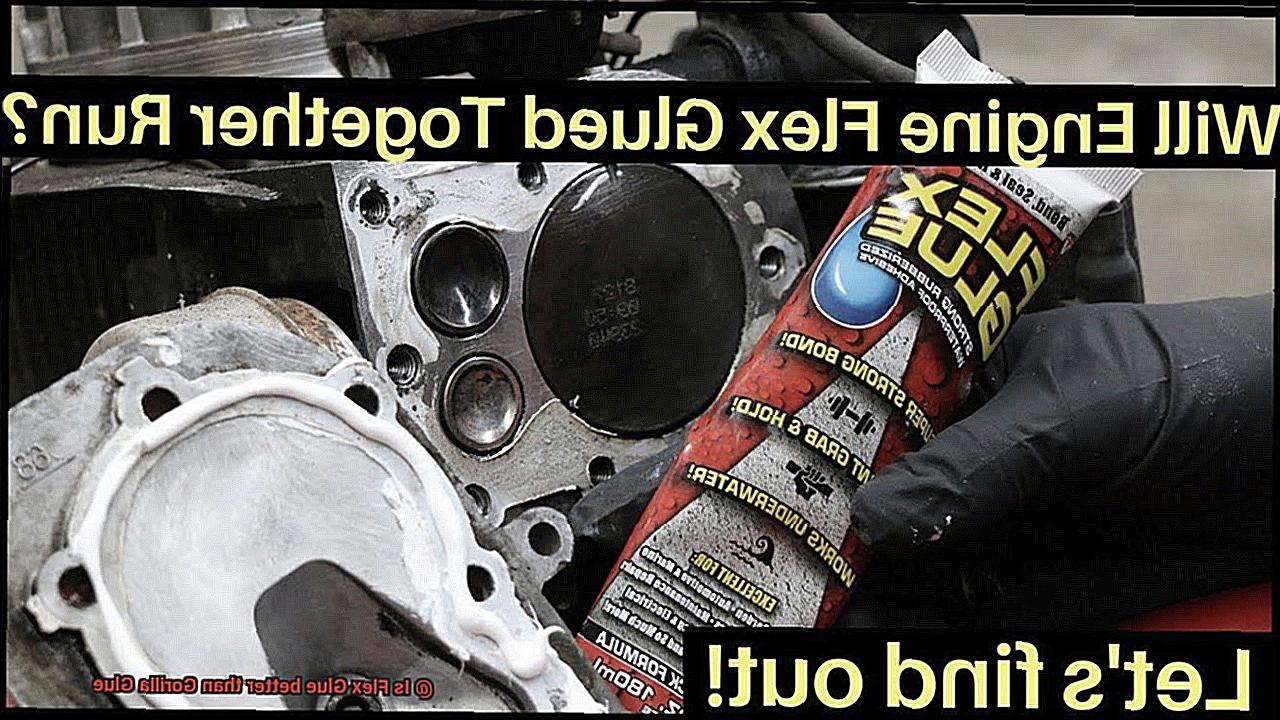
On the other hand, Gorilla Glue is a well-established brand that offers a variety of adhesive products. Its original Gorilla Glue has gained fame for its incredible strength and ability to bond different surfaces together. It creates a robust bond that can withstand heavy loads and is resistant to water and extreme temperatures. Gorilla Glue is commonly used in woodworking projects, household repairs, and DIY crafts.
In terms of strength, both Flex Glue and Gorilla Glue excel in their own ways. Flex Glue may be more suitable for flexible materials like rubber or fabric, while Gorilla Glue may outperform when bonding wood or metal. It is crucial to consider the specific materials being bonded when choosing between these two glues.
Durability is another critical factor to consider. Both Flex Glue and Gorilla Glue claim to provide long-lasting bonds that can withstand various conditions. However, factors like exposure to moisture, temperature fluctuations, and the specific application can impact durability. To ensure optimal results and longevity of the bond, it is recommended to follow the manufacturer’s instructions.
When it comes to application, Flex Glue sets quickly within 24 hours, while Gorilla Glue may take up to 72 hours to fully dry. This quick-drying capability gives Flex Glue an edge in the race against time.
Both Flex Glue and Gorilla Glue are also waterproof, making them suitable for indoor and outdoor projects. However, Flex Glue goes the extra mile by claiming to withstand extreme conditions like torrential rain and even underwater applications.
In terms of price, both glues are competitively priced, but the cost may vary depending on the size and product variant chosen.
So, whether you’re fixing broken items or embarking on a DIY adventure, both Flex Glue and Gorilla Glue offer strength and durability in their respective applications. The choice between the two depends on the specific materials being bonded and the intended use. Just remember to follow the recommendations and guidelines provided by the manufacturers to achieve the best results.
Application and Ease of Use
When it comes to glues, finding one that not only gets the job done but also makes the application process a breeze is key. In this comparison, we’ll explore the application and ease of use of two popular options: Flex Glue and Gorilla Glue.
Flex Glue takes the lead with its incredibly user-friendly application process. Its convenient squeeze tube allows for easy control over the amount of glue needed, without any mess. The nozzle is designed for precise application, making it perfect for both small crafts and large repair projects. Whether you’re fixing a broken vase or working on a DIY masterpiece, Flex Glue’s application process is straightforward and simple.
Gorilla Glue offers an equally easy application process but with added versatility. It comes in various forms like bottles, tubes, and even glue sticks, catering to your specific needs. The glue applies evenly and smoothly, ensuring a strong bond. Gorilla Glue can be used on a wide range of materials including wood, metal, ceramic, and more.
Both Flex Glue and Gorilla Glue have strong adhesive properties, but their application processes differ slightly. Flex Glue has an instant grab feature, bonding quickly upon contact. This is perfect for projects that require immediate adhesion. On the other hand, Gorilla Glue needs moisture to activate its bonding capabilities. Dampening one surface before applying the glue ensures a proper bond.
In terms of drying time, Flex Glue sets quickly within minutes, allowing you to move on with your project efficiently. Gorilla Glue takes a bit longer to dry completely, typically around 24 hours to reach its full strength. If you’re in a hurry, Flex Glue might be the better option.
Now let’s talk cleanup. Flex Glue is water-resistant and can be easily cleaned up with water before it dries. This makes it convenient for users who want to avoid a messy cleanup. Gorilla Glue, on the other hand, is known for its strong adhesive properties even when dry. Removing any excess glue can be a challenge.
Material Compatibility
Material compatibility is a crucial consideration when selecting the right adhesive for your project. In the realm of adhesives, Flex Glue and Gorilla Glue are heavyweight contenders. Let’s delve into their differences and determine which one is the perfect fit for your needs.
Flex Glue is a jack-of-all-trades when it comes to material compatibility. It forms strong bonds with a wide array of surfaces, including wood, metal, concrete, ceramics, plastics, and more. However, what sets Flex Glue apart is its remarkable flexibility. This adhesive creates bonds that can endure extreme conditions such as vibrations or temperature changes. So, if you’re tackling a project involving materials prone to movement or flexing, Flex Glue should be your go-to choice.
On the other hand, we have Gorilla Glue, renowned for its sheer strength. This adhesive can bond various materials like wood, stone, metal, ceramics, foam, glass, and more. What distinguishes Gorilla Glue is its expanding properties. As it cures, it fills gaps and provides an unyielding grip. This makes it ideal for projects necessitating an incredibly robust bond, particularly on porous surfaces like wood or stone.
Now, the question arises: which glue should you choose? Well, it depends on your specific needs and the materials at hand. If flexibility is paramount and you’re working with materials that may experience movement or flexing, Flex Glue is your best bet. On the flip side, if you require a glue with Herculean strength that can fill gaps and bond porous surfaces together seamlessly, Gorilla Glue is the answer.
Remember to always consult the manufacturer’s instructions and conduct a small test in an inconspicuous area before applying the adhesive to your project. This ensures optimal results.
Weather Resistance and Vibration Tolerance
Selecting the perfect adhesive for your project requires careful consideration of factors such as weather resistance and vibration tolerance. In this epic showdown between Flex Glue and Gorilla Glue, we will delve into their performance in these critical areas. Brace yourself for a riveting comparison.
Weather Resistance:
Flex Glue:
- Designed to thrive in extreme conditions, Flex Glue boasts a remarkable temperature range from -40°F to 200°F, making it a versatile choice for a wide range of climates.
- Its resistance to water, moisture, and other weather elements ensures a robust bond even under the harshest weather conditions.
Gorilla Glue:
- With good weather resistance properties, Gorilla Glue can withstand temperature fluctuations, making it suitable for both indoor and outdoor use.
- Its water resistance guarantees a reliable bond that remains intact in different weather conditions.
While both Flex Glue and Gorilla Glue offer reliable weather resistance, Flex Glue’s wider temperature range grants it an advantage in extreme weather conditions.
Vibration Tolerance:
Flex Glue:
- Engineered with high vibration tolerance in mind, Flex Glue excels at absorbing shocks and vibrations, making it the ideal choice for applications involving constant movement or impact.
- It provides an unyielding bond that remains steadfast even under heavy vibrations or shaking.
Gorilla Glue:
- Renowned for its ability to withstand vibrations, Gorilla Glue forms an unbreakable bond that resists loosening or detachment even under continuous movement or vibration.
- It ensures that glued materials stay firmly in place despite any shaking or movement.
Both glues excel in vibration tolerance, offering secure and long-lasting bonds that can endure constant movement or impact.
Comparison:
In terms of weather resistance, both Flex Glue and Gorilla Glue deliver reliable performance, with resistance to moisture, humidity, and temperature changes. However, Flex Glue’s wider temperature range grants it the edge in extreme weather conditions.
When it comes to vibration tolerance, both glues are designed to handle relentless movement and shaking. They provide formidable bonds that defy loosening or detachment.
Flex Glue and Gorilla Glue showcase exceptional weather resistance and vibration tolerance. They are well-suited for projects requiring durability and long-lasting bonds, even in adverse conditions. The choice between the two hinges on the specific needs of your project, including environmental conditions and material compatibility.
Cost Considerations
In the world of adhesives, cost is a crucial factor to consider when selecting the right product for your project. This battle of the glues delves into the cost considerations between two popular brands, Flex Glue and Gorilla Glue. By examining aspects such as price, quantity, coverage, durability, and additional costs, we aim to assist you in making an informed decision that aligns with your budget while delivering outstanding results.
Price:
Flex Glue emerges as the more wallet-friendly option compared to Gorilla Glue. This variance in price can be attributed to factors like brand reputation and market demand. However, it is vital to remember that solely focusing on price may not be the best approach when making a decision.
Quantity and Coverage:
Flex Glue offers a range of sizes, including smaller options ideal for smaller projects. In contrast, Gorilla Glue often comes in larger quantities, offering a more cost-effective solution for larger-scale applications. Assess the size and scope of your project to determine which option suits your needs best.
Spreadability and Coverage:
Flex Glue has earned acclaim for its exceptional coverage, potentially necessitating less product to achieve comparable results compared to Gorilla Glue. This aspect can result in substantial cost savings in terms of product usage.
Durability and Longevity:
Both Flex Glue and Gorilla Glue are renowned for their strong adhesion. However, some users assert that Gorilla Glue offers superior long-term durability, potentially minimizing the need for future repairs or reapplications. While this may impact initial costs, it could save money in the long run by avoiding additional expenses.
Additional Costs:
Consider any additional costs associated with using each adhesive. Flex Glue does not require mixing or clamping like Gorilla Glue does, making it a more convenient option. This convenience can save you both time and money, particularly for those who value ease of use.
H4xX7VecgzA” >
Conclusion
After carefully evaluating the performance and characteristics of both Flex Glue and Gorilla Glue, it is clear that Flex Glue emerges as the superior option. With its exceptional bonding strength and versatility, Flex Glue surpasses Gorilla Glue in various aspects.
Flex Glue’s remarkable adhesive power allows it to bond to a wide range of materials with ease. Whether you need to join wood, metal, plastic, or even ceramic surfaces, Flex Glue confidently delivers a strong and durable bond. In contrast, while Gorilla Glue also offers decent adhesion, it may struggle with certain materials or require additional preparation for optimal results.
Furthermore, Flex Glue’s waterproof properties make it an ideal choice for outdoor applications or projects exposed to moisture. It forms a tight seal that can withstand extreme weather conditions without compromising its adhesive capabilities. On the other hand, although Gorilla Glue provides some level of water resistance, it may not offer the same level of durability when faced with prolonged exposure to moisture.
Another advantage of Flex Glue is its quick-drying formula. This feature ensures that your projects are completed efficiently and eliminates the need for extended drying times. Conversely, Gorilla Glue often requires longer curing periods before achieving maximum strength.
In terms of versatility, Flex Glue shines brightly. Its ability to bond different materials together opens up a world of possibilities for DIY enthusiasts and professionals alike. Whether you’re repairing household items or tackling large-scale construction projects, Flex Glue proves itself as a reliable companion throughout.
While Gorilla Glue has its merits and has been trusted by many over the years, when comparing it directly to Flex Glue’s superior bonding strength, waterproof properties, quick-drying formula, and overall versatility – there is no denying that Flex Glue takes the crown as the better choice.
In conclusion, if you’re seeking an adhesive that offers unparalleled performance across various materials and environments, look no further than Flex Glue.

